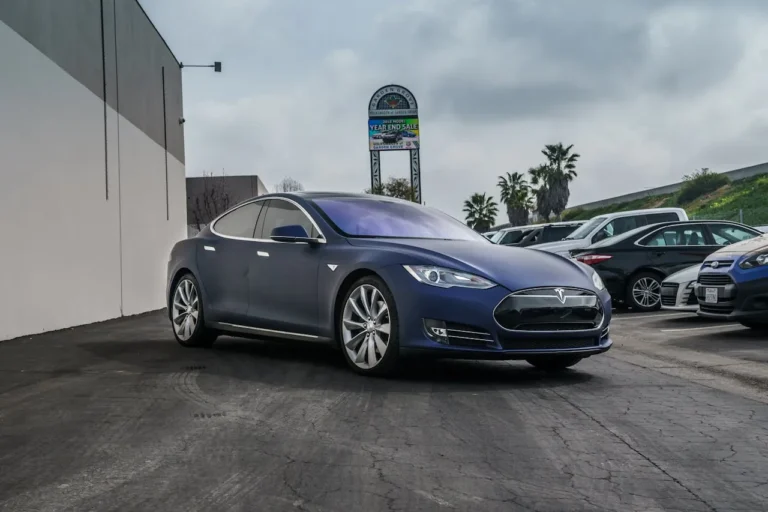
Electric Vehicle Telematics Market Report 2025: A Growing Industry Poised for Expansion
The global market for Electric Vehicle telematics is experiencing significant growth, driven by the increasing adoption of electric mobility, technological advancements, and expanding charging infrastructure. According to the latest “Electric Vehicle Telematics – Global Strategic Business Report” by ResearchAndMarkets.com, the market was valued at $13.5 billion in 2024 and is projected to reach $41.7 billion by 2030, growing at a compound annual growth rate (CAGR) of 20.6% during this period.
Factors Driving Growth in the EV Telematics Market
Several key factors contribute to the rapid expansion of the EV telematics market:
- Government Regulations and Clean Energy Initiatives: With increasing concerns about climate change and carbon emissions, governments worldwide are promoting electric vehicles through incentives, subsidies, and stringent emission regulations. This has led to widespread adoption and, consequently, a growing demand for telematics systems that optimize vehicle performance.
- Technological Advancements in Telematics: Improvements in data analytics, cloud computing, and Internet of Things (IoT) technologies have significantly enhanced the capabilities of telematics. These systems can now provide real-time monitoring, predictive maintenance, and route optimization, ensuring that fleet operators and individual users maximize efficiency and reduce operational costs.
- Expanding Charging Infrastructure: The rapid growth of charging stations globally has further bolstered the adoption of telematics solutions. These systems help drivers locate nearby charging stations, plan efficient routes based on battery range, and monitor charging performance, reducing range anxiety and improving the overall experience.
- Fleet Management Adoption: Many businesses in logistics, public transportation, and ride-hailing services are integrating telematics solutions into their electric vehicle fleets. These technologies enable fleet managers to monitor battery health, optimize charging schedules, and enhance vehicle efficiency, resulting in cost savings and improved service reliability.
- Consumer Demand for Sustainable Mobility: As more consumers prioritize environmentally friendly transportation options, companies are increasingly investing in telematics to enhance their brand reputation and operational efficiency. This trend is expected to drive further adoption of these solutions in both personal and commercial vehicle segments.
Technological Innovations Enhancing EV Telematics
Recent advancements in technology have expanded the functionality of telematics, making them an essential tool for fleet operators and individual owners. Key innovations include:
- IoT and Cloud Computing Integration: Modern telematics systems leverage IoT sensors to collect data from various vehicle components, such as the battery, motor, and brakes. This data is then transmitted to cloud platforms, where it is analyzed in real-time to provide actionable insights.
- Predictive Maintenance: Machine learning and predictive analytics allow telematics systems to anticipate potential vehicle issues before they occur. By analyzing historical usage patterns, these systems can recommend maintenance schedules, reducing downtime and prolonging vehicle lifespan.
- GPS-Enabled Route Optimization: By considering battery range, traffic conditions, and charging station locations, EV telematics help drivers plan the most efficient routes, reducing energy consumption and improving overall performance.
- Remote Software Updates: Over-the-air (OTA) updates enable manufacturers and fleet operators to enhance telematics system functionalities without requiring physical maintenance, ensuring continuous improvement in vehicle efficiency and safety.
- Enhanced Driver Safety Features: Many telematics systems now integrate with Advanced Driver Assistance Systems (ADAS) to improve vehicle safety. Features such as collision detection, lane departure warnings, and automated emergency braking are increasingly being incorporated into EV telematics solutions.
Market Forecast and Regional Insights
The EV telematics market is expected to witness robust growth across multiple regions:
- United States: The U.S. market is projected to grow significantly, reaching a valuation of $3.6 billion in 2024, with continued expansion driven by government policies, corporate fleet adoption, and technological advancements.
- China: With a forecasted CAGR of 19.5%, China is expected to be a major player in the EV telematics market, reaching $6.4 billion by 2030. The country’s strong push toward EV adoption and infrastructure development is fueling this growth.
- Europe and Asia-Pacific: Countries such as Germany, Japan, and Canada are also experiencing rapid adoption of telematics, driven by increasing demand for electric vehicles and advanced mobility solutions.
Market Segmentation and Competitive Landscape
The EV telematics market is categorized into different segments based on vehicle type:
- Passenger Cars: This segment is expected to dominate the market, reaching $31.1 billion by 2030 with a CAGR of 21.4%. The growing consumer shift toward s, along with advancements in telematics-based infotainment and navigation solutions, is driving growth in this category.
- Commercial Vehicles: This segment is also projected to witness significant growth at an 18.5% CAGR, primarily due to increasing adoption of electric fleets in logistics and public transport sectors.
Leading Players in the EV Telematics Market
Several key players are actively shaping the EV telematics landscape. Some of the notable companies in the industry include:
- Agero, Inc.
- ampcontrol.io
- Atlanta Systems Pvt. Ltd.
- Azuga
- CSS Electronics
- ERM Electronic Systems Ltd.
- Geotab, Inc.
- Intellicar Telematics
- INVERS GmbH
- Levl Telematics Limited
These companies are focusing on innovation, strategic partnerships, and product development to stay competitive in the rapidly evolving EV telematics market.
The electric vehicle telematics market is poised for exponential growth, driven by regulatory support, technological advancements, and the increasing adoption of EVs across personal and commercial segments. As fleet operators, automakers, and consumers continue to prioritize efficiency, sustainability, and safety, telematics solutions will play a crucial role in optimizing electric mobility. With a projected market value of $41.7 billion by 2030, the future of EV telematics is promising, positioning it as a vital component of the global shift toward smart and connected transportation.








